OBSTACLES GALORE BUT L&T GEOSTRUCTURE SITES FORGE AHEAD!
The pandemic has disrupted lives and businesses across the world. The construction industry worldwide is also going through the rigours. Perhaps, Sanjeevi Perumal, Project Manager at the 2×660 MW Ennore SEZ Super Thermal Power Project, near Chennai, will feel that COVID-19 has sought him out for special treatment considering the challenges he has had to face! With the city throwing up positive cases by the thousands, it was declared a hot zone and with Chennai slipping in and out of lockdowns, uncertainty ruled the lives of the project team. Made of sterner stuff, Sanjeevi and his team took these in their collective stride and moved into overdrive as soon as things started to stabilize proceeding with their sequential fabrication, piling, pile cap, building and painting works.
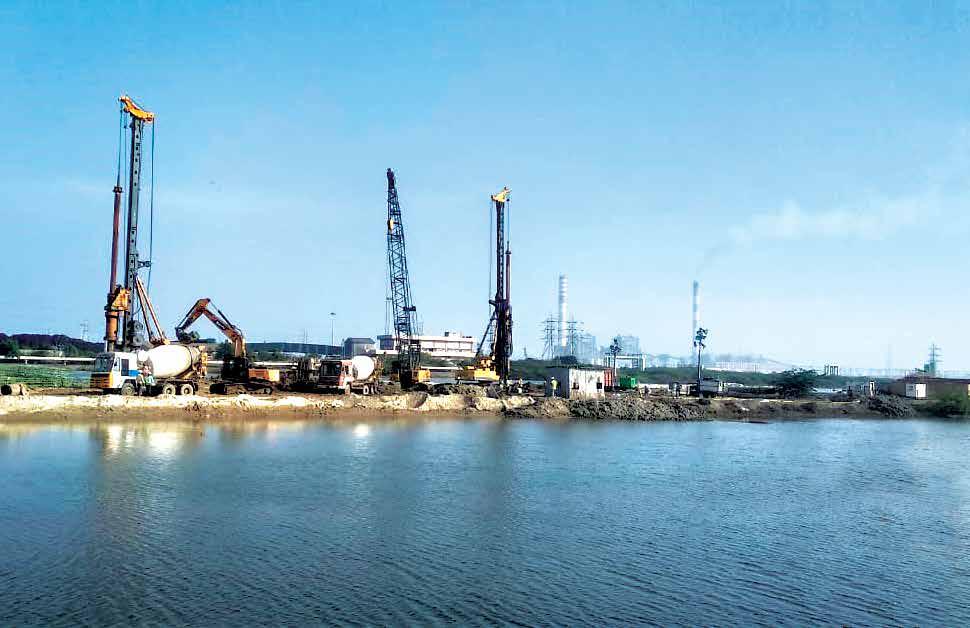

“That we have handled a total volume of more than 5000 cum in the last two months shows our momentum and pace of works during these crisis times.”
Sanjeevi Perumal
Project Manager, 2 x 660 MW
Super Thermal Power Project, BHEL-Ennore
“Since resumption, we have completed 360 piles, 17,990 cum of concreting, 1635 MT of reinforcements and 2029 MT of structural steel fabrication,” shares Sanjeevi, reeling off the numbers in a rush. “We successfully completed the vacuum pump house slab of (20 X 41 m span), 300 cum concrete with a staging volume of over 3600 cum and formwork of 1400 sqm, roof beams of 2 m depth and installed multiple EPs for further mechanical works.” The team has completed a 792 cum transfer tower foundation installed with 100 bored cast insitu piles of 600 mm dia, involving excavation at a depth of 4 m below ground, PCC, pile chipping, two lateral load test works and 114 MT of reinforcement and shutter works with waler and tie road fixing. “We have also successfully completed major pile cap foundations for the External Coal Handling System involving excavation, pile chipping of more than 250 numbers and reinforcement works of more than 450 MT,” continues an obviously excited Sanjeevi. “That we have handled a total volume of more than 5000 cum in the last two months shows our momentum and pace of works during these crisis times.”
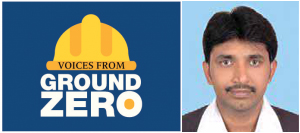
“Once we got cracking, there was no looking back. We targeted to mobilize 600 workmen by end August but by mid-September we have already mobilized 770.”
Krishna Karteek
Head Planning, 2 x 660 MW
Super Thermal Power Project, BHEL-Ennore
Curing labour pains
Sanjeevi’s excitement should be seen against the backdrop of the problems the site has had to face during and after the lockdown. “End March, we had 61 staff and 501 workmen but as soon as the lockdown was announced, our workmen strength dropped to just 8,” shares Head – Planning, Krishna Karteek. “We could not restart operations when the lockdown was relaxed as our personnel were staying 15 km away from site and could not travel.” The team’s proposal ‘to construct’ new workmen quarters at site was only approved by the client in July. Chennai saw a second lockdown from 19th June to 5th July and steady operations only started thereafter. “Once we got cracking, there was no looking back,” exclaims Krishna. “We targeted to mobilize
600 workmen by end August but by mid-September we have already mobilized 770.”
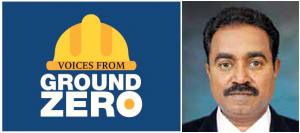
“Through some concerted efforts, we increased our labour strength from 42 to 420. In the process, we completed 4,500 cum of concrete, cast around 215 precast slabs,
50 I-girders and 15 piles.”
R Ravikumar
Project Manager, Sea Water intake for
2 x 800 MW Super Critical Thermal Power Project, Uppur
The story is much the same for Project Manager, R Ravikumar at the Uppur project. His workmen strength of 533 (225 local and 308 migrant labour) dwindled to just 24 within a week. “Idle minds are dangerous, and we have had some unrest regarding salaries, but we have pacified them,” he informs. By the time the relaxations were announced on April 20th, the site had 300 workmen including 42 locals, “but things were unsettled as the migrants wanted to leave. Through some concerted efforts, we increased our labour strength from 42 to 420,” says Ravikumar, obviously pleased with his team’s effort. “In the process, we completed 4,500 cum of concrete, cast around 215 precast slabs, 50 I-girders and 15 piles.”

With Project Manager, Sarasindu Datta’s team raring to re-start their activities of spillway concreting, radial gates, sluice fabrication works, and earthwork at the Runj Dam project, labour was their pain point too. “Before lockdown, our subcontracted labour strength was 120 workmen for both shifts and a departmental workmen strength of 73 workmen,” he shares. “After resumption, we were left with only 70 subcon and 45 departmental workmen. Even so hamstrung, we have forged ahead despite the monsoon and are well on the road to make up for the time lost.”

Overall view of Spillway from downstream at Runj Dam
After some vigorous follow up when Construction Manager, Sreejith Menon and team finally received client permissions to restart work at the Panki Power House project, they realized that their workforce had dropped alarmingly. “With only 115 workmen available, we started with activities that were more equipment-led requiring less workmen like excavation and piling,” Sreejith points out. “We commenced civil works on pile caps only after achieving a threshold level of workmen.” By sourcing manpower from around Kanpur, they reached a figure of 247 by the third week of May.

“Even so hamstrung, we have forged ahead despite the monsoon and are well on the road to make up for the time lost.”
Sarasindhu Datta
Project Manager,
Design and Construction Runj Dam
Planning Manager, Ankur Bhadoria’s issue was that the job required skilled workmen while the locals were largely unskilled. “To overcome this challenge, we focused more on on-site training with professional supervision and our frontline supervisors rose to the challenge by getting involved to impart job specific training.
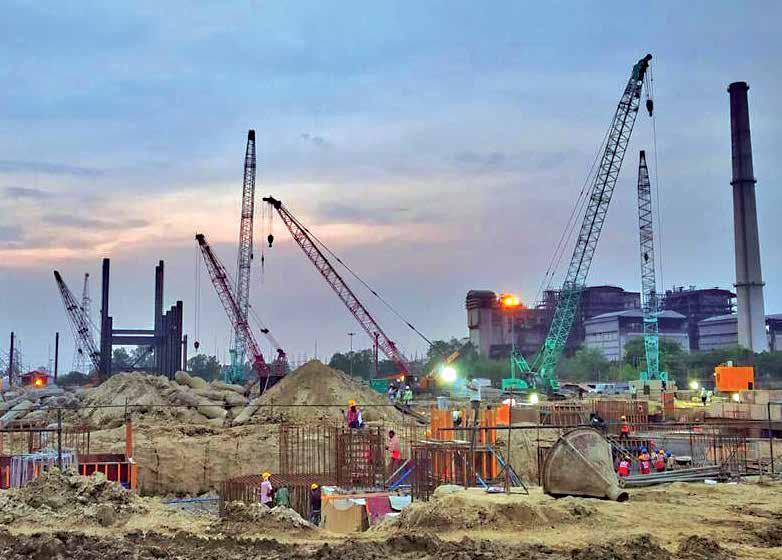
Piling work in progress at Panki

Gradually with close supervision and monitoring, we were able to train the newly inducted workmen to significantly improve productivity and get the site works running to full capacity.”
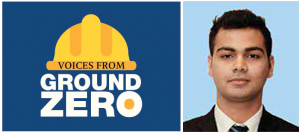
“We focused more on on-site training with professional supervision and our frontline supervisors rose to the challenge by getting involved to impart job specific training.”
Ankur Bhadoria
Planning Manager,
1 x 660 MW Panki Thermal Power Plant
When manpower dropped in March – May, invoicing dropped by 33% too, but when manpower and activities increased, so did the invoicing. Traditionally, piling activities contribute to the bulk of the invoicing but with uncertainty about the availability of piling work fronts, Sreejith had to think out-of-the-pile, as it were. “We decided to remove internal and external heavy equipment that were costing us,” he says, “and focused on round-the-clock and weekend working to complete maximum works in the allotted time frame. We monitored the utilization of equipment, de-hiring the underutilized ones that helped reduce our overheads,” he smiles. And, he has reason to smile. “We have handed over the NDCT, Powerhouse and Absorber Foundation area, ID fan etc., collected payment for works done till July 2020 and payment for August is expected by this month-end.”

“We decided to remove internal and external heavy equipment that were costing us and focused on round-the-clock and weekend working to complete maximum works in the allotted time frame. We monitored the utilization of equipment, de-hiring the underutilized ones that helped reduce
our overheads.”
Sreejith Menon
Construction Manager,
1 x 660 MW Panki Thermal Power Plant
Addressing supply chain disruptions
Sites all over are contending with the disruption of supply chains that are critical for project progress. At Uppur, the team was left with only about 10 – 15 days stock of cement and aggregates and with pace of construction picking up, the situation was becoming serious. They discovered that vendors had stocks, but transportation was the roadblock. “Our store management team directly contacted all the major transport services and worked out the modalities of delivery though at rates far higher than pre-COVID times.” Planning Manager, Arokia Jaint’s perturbation is understandable. Delivery time was stretched too: a consignment of glass reinforced pipes from Gujarat to Tamil Nadu that would have normally taken 4-5 days was taking more than 2 weeks even with all the required documents. “We had to revise our construction plans according to these delivery schedules,” observes Jaint, “and even scheduled the date and time of arrival of items and aggregates to minimize contact after procuring approvals from the district administration.”
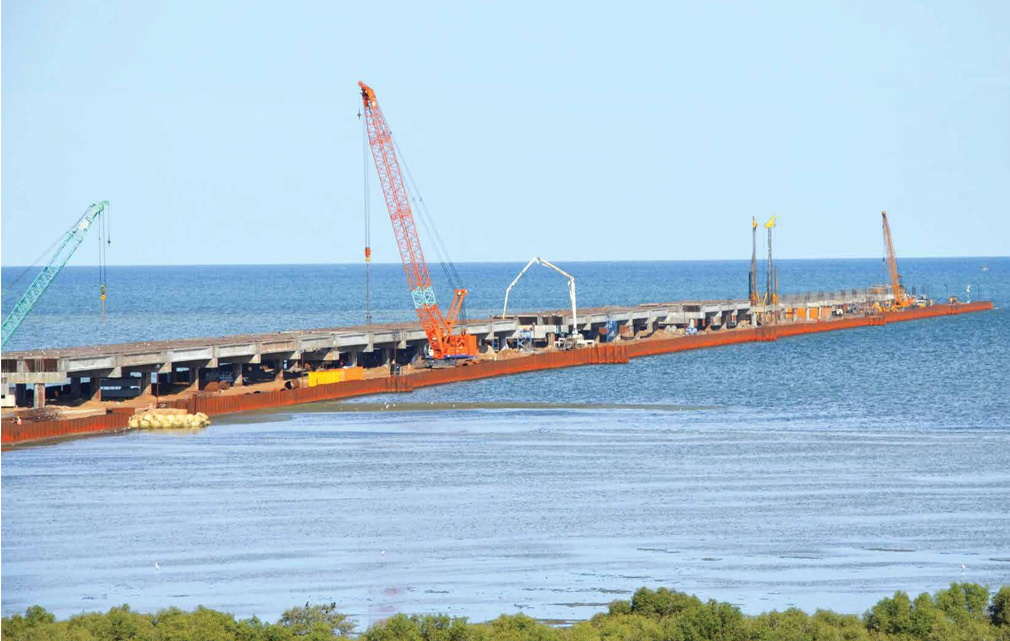
Seawater intake outfall structure at Uppur
Sarasindu acknowledges the help and support of the HQ procurement team, suppliers, and vendors to procure the required supplies. “It not only helped us to progress, but also sustained us during the monsoon and now that the monsoon has receded, regular work has resumed across sectors and we are gunning for our targets at a much faster pace.” Sarasindu’s enthusiasm is infectious although he and his team have an additional hurdle of getting work approvals from Client and other government agencies. “Being a state government sponsored project involving forest and revenue department clearances over work-oriented lands, clearances have been stalled at various stages,” he laments, “but since our district has started to function normally, we are hopeful of getting more work fronts opened,” he says with his fingers crossed.
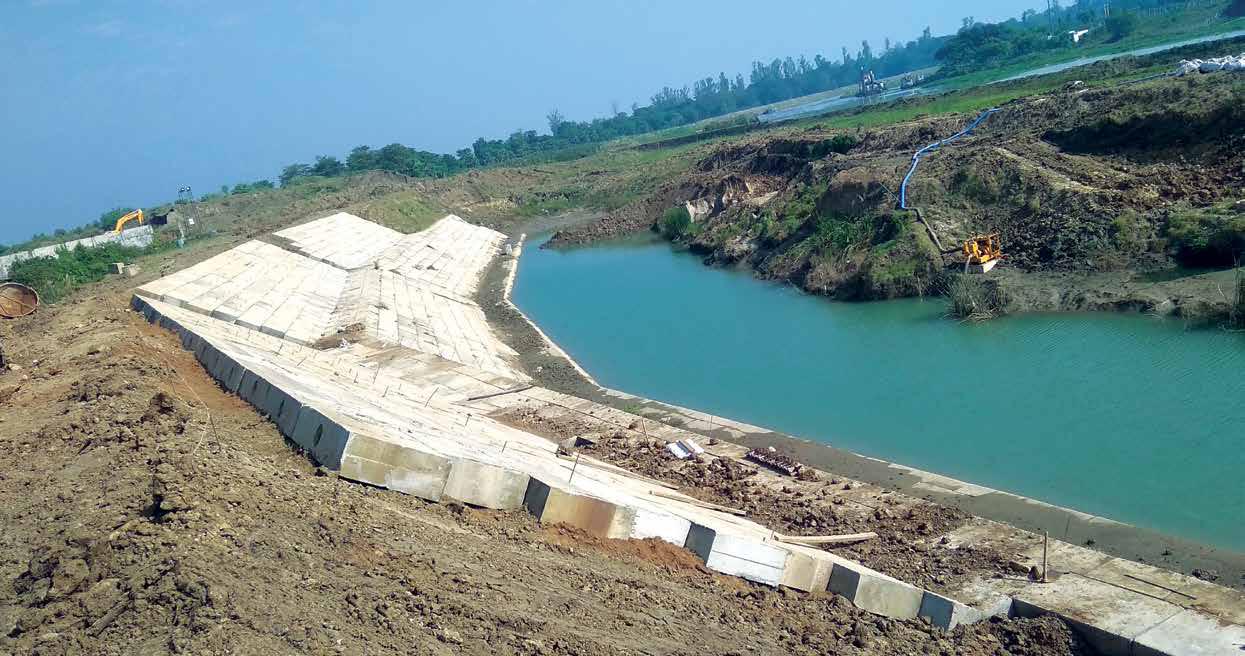
Aerial view of New Navigational Lock at Farakka
At the Navigational Lock Facility being constructed for IWAI at Farakka in West Bengal, problems multiplied for Project Manager, Rajaneesh Kumar Rai as they ran out of stock of the approved OPC cement from Ramco in the first week of May. “Our supplier’s plant located approximately 400 km away was in a red zone. In any case, they were operating with limited resources, facing logistical issues, and therefore regretted immediate supply.” Rajaneesh found a way around this issue. “Our site team, QA/QC in consultation with the procurement team presented a viable proposal to our client to approve PPC cement from Ambuja Cement. They approved our proposal in 13 days albeit for limited use.” The procurement team got into action and soon smooth supply of OPC cement was established.
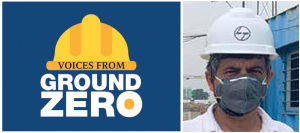
“Against all odds, our site team went all out post the lifting of restrictions from 20th April and till July have invoiced for 6.71 % of the job scope.”
Rajaneesh Kumar Rai
Project Manager,
New Navigational Lock at Farakka
Rajaneesh and his team proposed client and third-party inspections of procured items through video conferencing, and inspection waivers with internal test reports and photographs from the vendor. Again, the client approved the proposal, and the first virtual inspection was made on 6th June.
“Against all odds, our site team went all out post the lifting of restrictions from 20th April and till July have invoiced for 6.71 % of the job scope,” Rajaneesh looks reasonably happy.
Going digital helps
One positive impact of COVID-19 has been the widespread embracing of the digital mode. Digital approvals, video inspections and tele-conferences have become the norm. Apart from the already established digital solutions, the Workmen Mobilization App has been heaven sent for Sanjeevi Perumal’s team, in their concerted effort to mobilize labour. “Once we place our request in the App by providing details of project, location, nature and duration of work, we receive responses from various subcontractors in less than 6 hours about their interest to do the work, their location that helps us ascertain their distance from site, number of workmen available for us to plan for transportation and the like. This App has helped us negotiate and finalize the contractors during the lockdown, arrange buses for workmen and E Passes to mobilize 700 workmen in a span of 45 days.”
Challenges continue even as the pandemic rages, but project teams are finding ways and means to co-exist with the virus and still show progress. Here is wishing them all the very best!